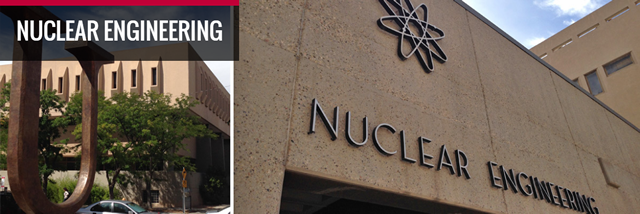
Nuclear Engineering ETDs
Publication Date
Spring 5-10-1977
Abstract
The safety analysis of Liquid Metal Fast Breeder Reactor (LMFBR) systems requires knowledge of the vapor pressure of reactor fuels up to 6000 K. A new technique was developed to obtain experimental vapor pressure data for reactor fuel materials at high temperatures and pressures. Fuel samples are pulse fission heated in the Annular Core Pulse Reactor (ACPR) at heating rates comparable to those anticipated during a severe LMFBR transient. The vapor of reactor fuels may contain several dissociated fuel species, volatile fission products, and/or fission gas. The evolution of that pressure may be time or rate dependent. For these reasons, the terminology Effective Equation of State (EEOS) measurements was used to differentiate those results from the vapor pressure of pure materials. This technique can be easily applied to plutonium bearing and previously irradiated. fuels.
A pressure transducer is used to monitor the pressure in a sealed graphite-lined volume containing the fuel sample during an ACPR transient. The energy input history to the sample is derived from the reactor power history, fission product inventory measurements, and neutron transport calculations. Energy losses from the sample are determined by linear inverse heat conduction techniques using temperature histories derived from thermocouples located in the walls of the confining pressure cell. Because of nonuniformities in the distribution of fission energy deposition within the sample and because of the energy losses from the sample, it is not possible to define a unique energy content history. It is possible, however, to define bounds on the energy content. Bounds on the vapor pressure (formulated as pressure as a function of energy content) are derived through a point by point comparison of the pressure history with the bounds on energy content.
The EEOS technique was used to determine the vapor pressure of high purity uranium dioxide with an oxygen-to-metal ratio of 2.08. Energy depositions of up to 2720 J/g relative to room temperature were obtained, resulting in measured pressures in excess of 38 MPa. Bounds on the vapor pressure of UO2.08 were found to be:
P(MPa) = exp [(10.004 ± 1.497 - (13.365 ± 2.535)/E(kJ)]
(upper pressure bound for 1.4 kJ ≤ E ≤ 1.9 kJ), and
P(MPa) = exp [(10.894 ± .198 - (18.298 ± .386)/E(kJ)]
(lower pressure bound 1.6 kJ ≤ E ≤ 2.0 kJ ). These results bound previous high temperature data reported by other investigators.
Document Type
Dissertation
Degree Name
Nuclear Engineering
Level of Degree
Doctoral
Department Name
Nuclear Engineering
First Committee Member (Chair)
August William Cronenberg
Second Committee Member
Theodore R. Schmidt
Third Committee Member
Arthur Vincent Houghton III
Fourth Committee Member
Robert Leroy Long
Recommended Citation
Reil, Kenneth Orvis. "Effective Equation of State Measurements on Uranium Dioxide." (1977). https://digitalrepository.unm.edu/ne_etds/100
